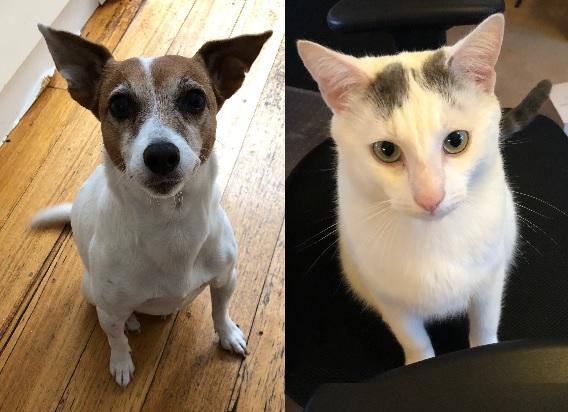
By Caroline Mills
Those that know me know I am animal mad. Currently we have two dogs, two cats, lots of goldfish and we feed (healthy food) to all the local birds.
I was thinking the other day about how change management on one level is about getting people to change behaviour – from one state to another and sometimes that can feel hard for us as change practitioners, particularly if the behaviour needing to change seems quite embedded.
We now know from recent years of neuroscience that we can change our mindsets, our behaviours and even re-wire our brain…….and that same science has made us question what we know about nature vs nurture…
The funniest recent teachers of this have been my animals...... The story goes that my dog Millie came in to a house some years back that had four adult cats…. Clearly as a dog she has some instincts natural to their species, but what is fascinating is that she has learnt from her environment (nurture) to creep like a cat – I don’t think dogs have retractable claws like cats, but she can creep from her bedroom to ours when she thinks we aren’t looking and she doesn’t make a sound.
Then the reverse with our new cats, they have been with us for a year now and came in to a house with two adult dogs. Millie is trained to bring the newspaper in (for a treat of course) and comes through the front door at full speed running to the kitchen with Charlie (the other dog) close on her heels. The other day they were tearing down to the kitchen and I heard this other noise closely behind and realised that the cats were following the dogs, but instead of soft, silent cat runs were making almost as much noise as the dogs landing heavily on their feet. I watched this over a week and realised that yes, they can still quietly stalk each other like cats - but running for dinner or for the treats following a newspaper delivery requires the loudest possible running, clearly learnt from observing the dogs as kittens
So, I have cat-dogs and dog-cats……
Really what I am saying is that if the dogs and cats can do it so can we – so what does the neuroscience research tell us about our brains in relation to change:
- Both nature and nurture win
- Experience transforms the brain – new experiences create new neural pathways and can physically change the brain
- Imagining and doing are the same to the brain – mentally practising shooting goals can have a similar impact to physically practicing shooting goals
- The more we practice something the more the brain changes
- Our brain is plastic (can learn new things and change (throughout our lives)
So, despair no more – get creative about how you are taking people through the change, use fun, games and create positive supportive learning environments to help people create behaviour change.
 (0)
(0) 







